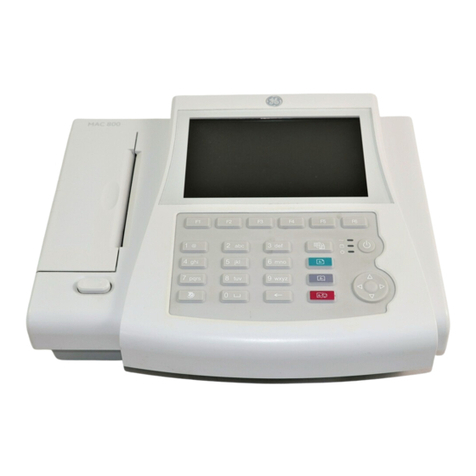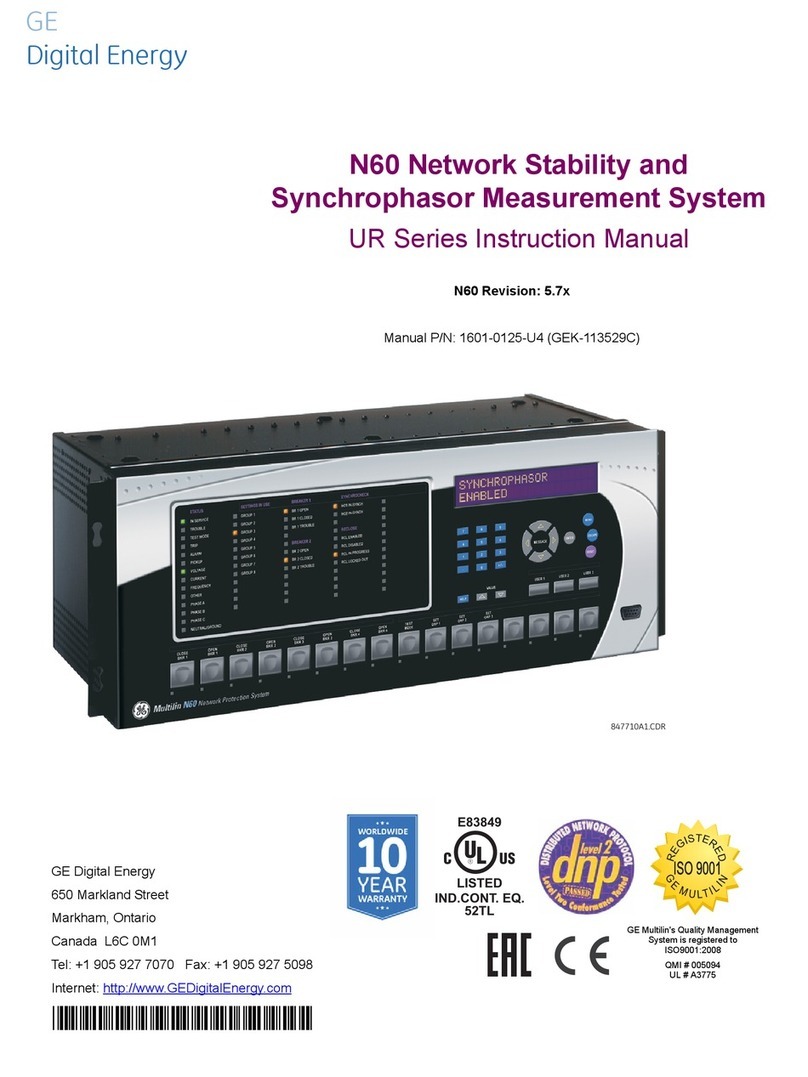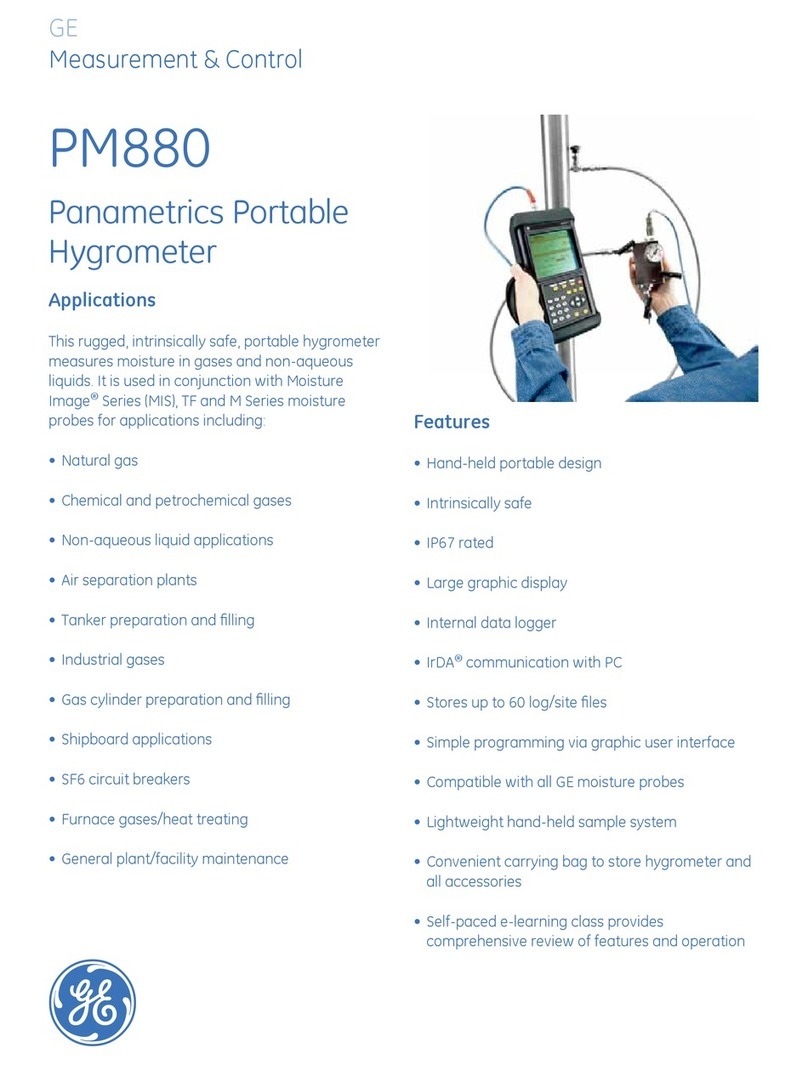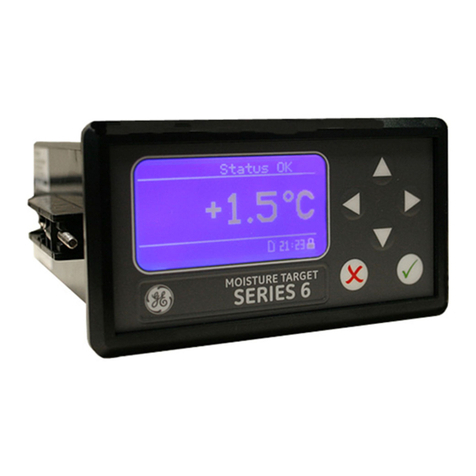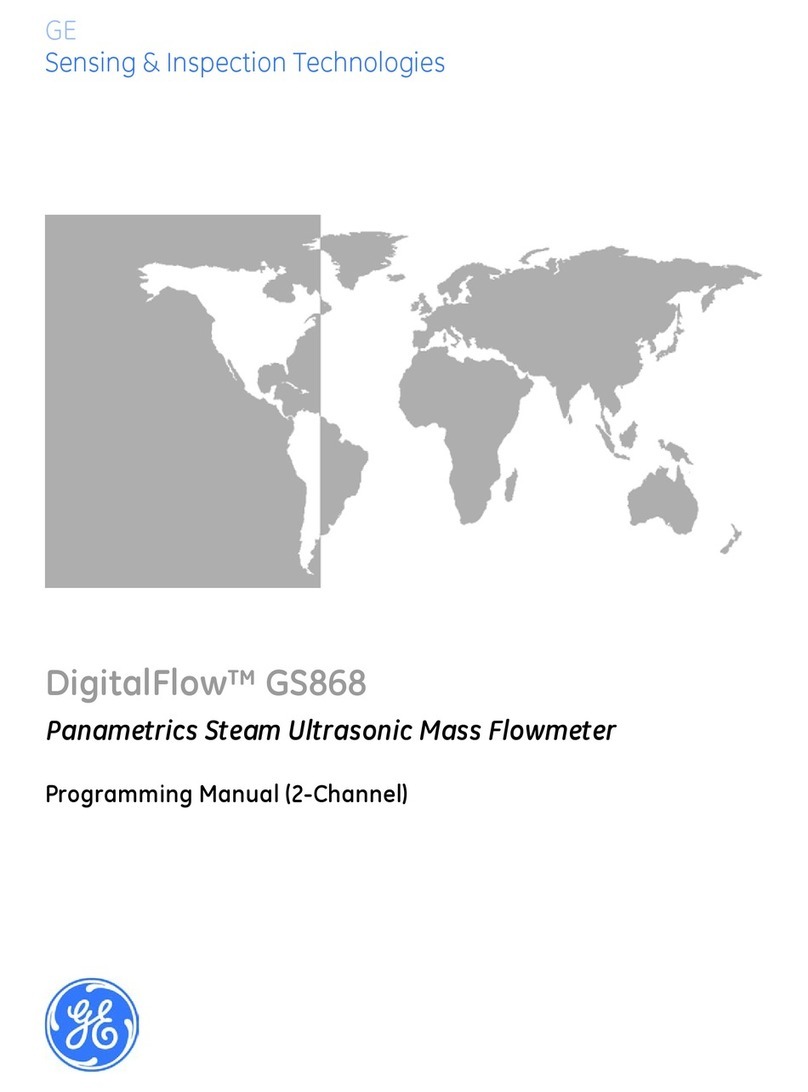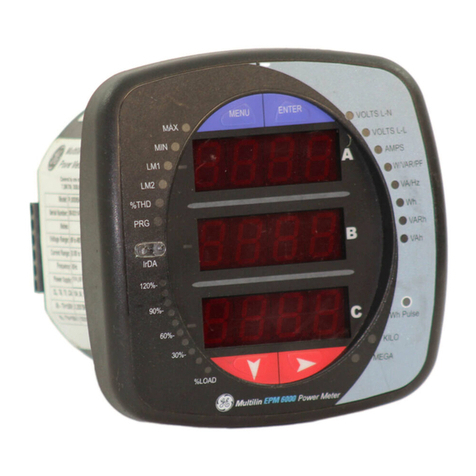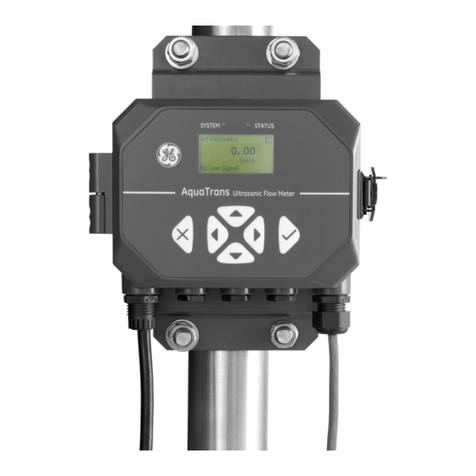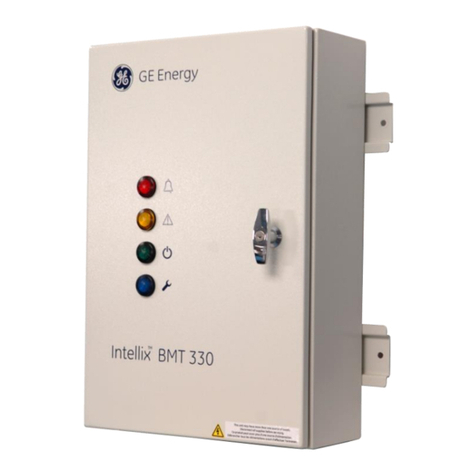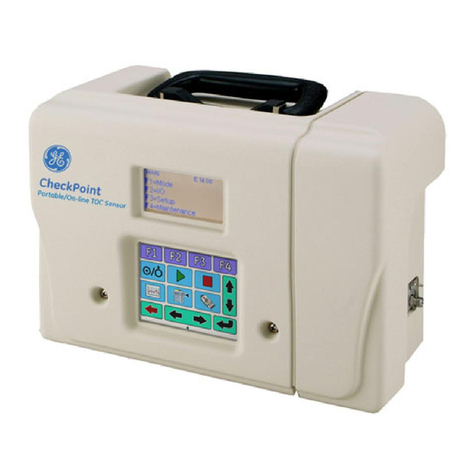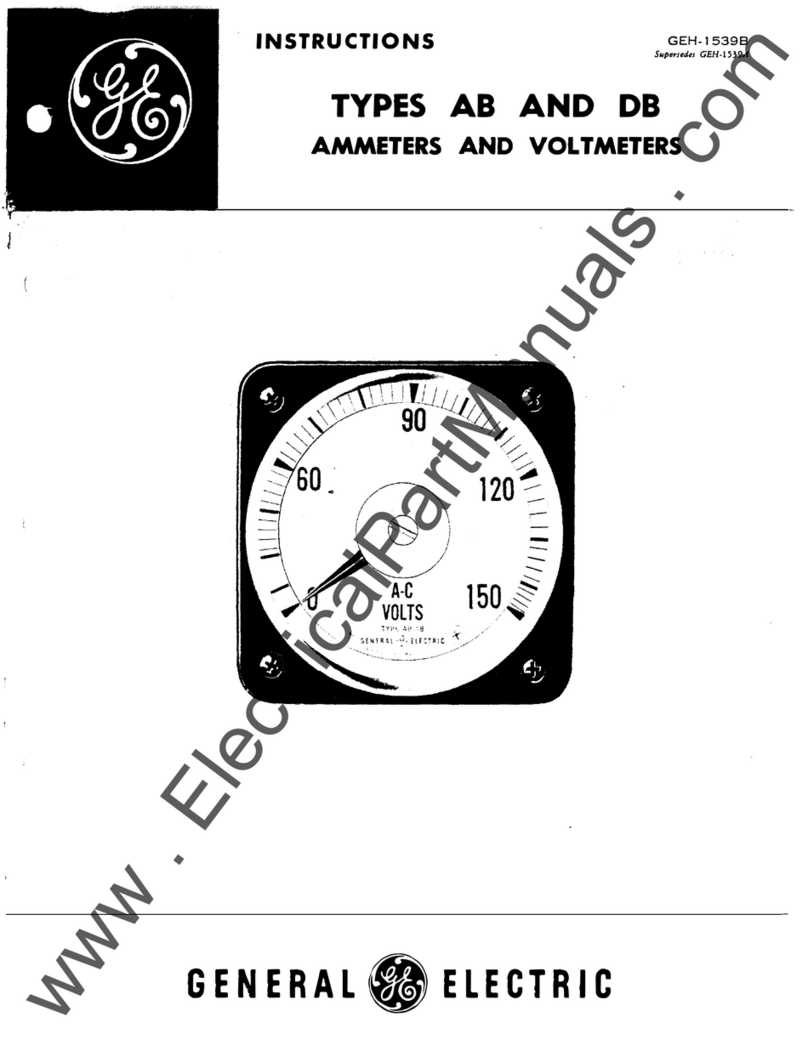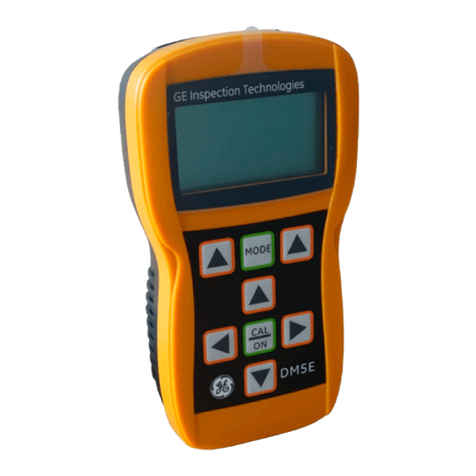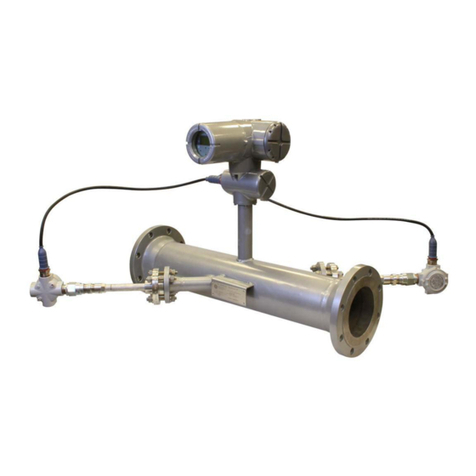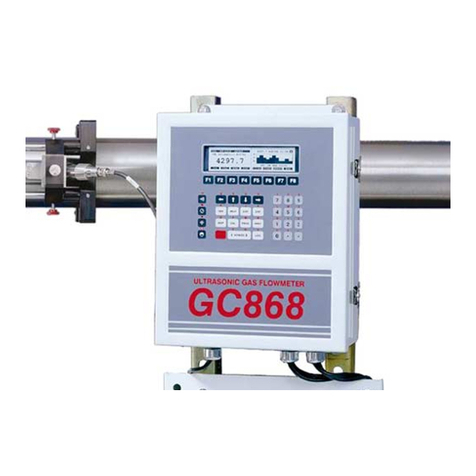
TOC TABLE OF CONTENTS
PQM POWER QUALITY METER – INSTRUCTION MANUAL TOC–III
5: MONITORING ACTUAL VALUES VIEWING ..............................................................................................5-1
DESCRIPTION ........................................................................................................................ 5-1
A1 METERING .....................................................................................................................5-3
CURRENT .............................................................................................................................. 5-3
VOLTAGE ...............................................................................................................................5-5
PHASORS .............................................................................................................................. 5-7
POWER .................................................................................................................................. 5-9
ENERGY ................................................................................................................................. 5-14
DEMAND ...............................................................................................................................5-16
FREQUENCY .......................................................................................................................... 5-17
PULSE COUNTER .................................................................................................................. 5-18
ANALOG INPUT .................................................................................................................... 5-19
A2 STATUS ..........................................................................................................................5-21
ALARMS ................................................................................................................................. 5-21
SWITCH STATUS .................................................................................................................. 5-23
CLOCK ................................................................................................................................... 5-24
PROGRAMMABLE MESSAGE ............................................................................................... 5-24
A3 POWER ANALYSIS .......................................................................................................5-25
POWER QUALITY .................................................................................................................. 5-25
TOTAL HARMONIC DISTORTION ......................................................................................... 5-26
DATA LOGGER ...................................................................................................................... 5-27
EVENT RECORDER ............................................................................................................... 5-28
A4 PRODUCT INFO ............................................................................................................5-33
SOFTWARE VERSIONS & MODEL INFORMATION ............................................................. 5-33
6: SOFTWARE INTRODUCTION .................................................................................................................6-1
OVERVIEW ............................................................................................................................ 6-1
HARDWARE CONFIGURATION ............................................................................................ 6-2
ENERVISTA PQM SETUP INSTALLATION ......................................................................6-4
CHECKING IF INSTALLATION/UPGRADE IS REQUIRED .................................................... 6-4
INSTALLING/UPGRADING ENERVISTA PQM SETUP ....................................................... 6-4
CONFIGURING ENERVISTA PQM SETUP COMMUNICATIONS ........................................ 6-6
ENERVISTA PQM SETUP MENUS ....................................................................................6-8
DESCRIPTION ........................................................................................................................ 6-8
UPGRADING FIRMWARE ..................................................................................................6-9
DESCRIPTION ........................................................................................................................ 6-9
SAVE/PRINT PQM SETPOINTS TO AFILE ......................................................................... 6-9
LOADING NEW FIRMWARE INTO THE PQM .................................................................... 6-9
FIRMWARE UPGRADE RECOVERY ...................................................................................... 6-11
LOADING SAVED SETPOINTS INTO THE PQM .................................................................. 6-13
USING ENERVISTA PQM SETUP .....................................................................................6-14
ENTERING SETPOINTS ......................................................................................................... 6-14
VIEWING ACTUAL VALUES ................................................................................................. 6-15
SETPOINT FILES .................................................................................................................... 6-15
GETTING HELP ..................................................................................................................... 6-15
POWER ANALYSIS .............................................................................................................6-17
WAVEFORM CAPTURE ......................................................................................................... 6-17
HARMONIC ANALYSIS ......................................................................................................... 6-18
TRACE MEMORY ................................................................................................................... 6-20
DATA LOGGER ...................................................................................................................... 6-22
Courtesy of NationalSwitchgear.com












